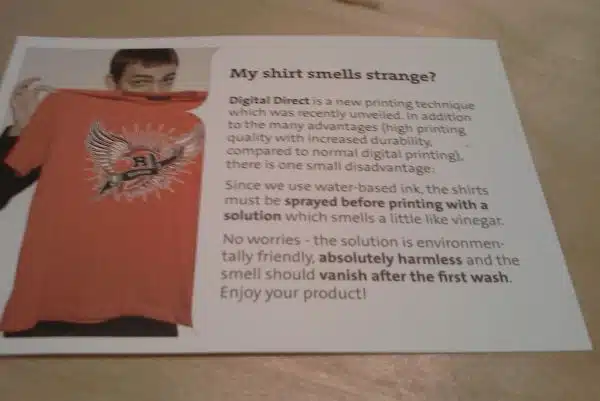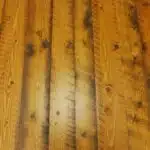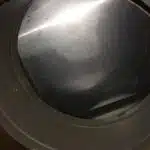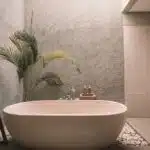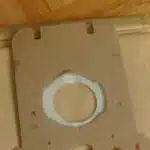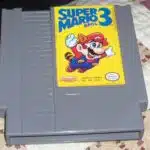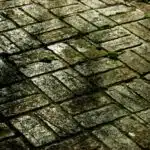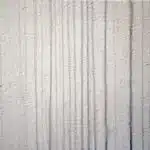As a cleaning expert and home cleaning specialist, I often get asked about the best methods and products for cleaning different surfaces in the house. One of the most popular questions I receive is about cleaning vinegar – what it is and how to use it. In this article, I will provide an overview of what cleaning vinegar is, its benefits, and how to use it effectively to clean various surfaces in your home.
Cleaning vinegar is a type of vinegar that has been specifically formulated for household cleaning purposes. It has a higher concentration of acetic acid than regular vinegar (up to 20%, compared to 5% in regular vinegar), which makes it more effective at dissolving tough stains, grime, and dirt. Cleaning vinegar can be used on a variety of surfaces including windows, floors, countertops, appliances, and bathroom fixtures. Its natural properties make it an environmentally-friendly alternative to harsh chemical cleaners that can be harmful to both you and the environment. In the following paragraphs, we will dive deeper into how you can use cleaning vinegar to clean different areas of your home.
What Is Cleaning Vinegar?
Cleaning vinegar is a type of vinegar that has been specially formulated for cleaning purposes. Unlike regular household vinegar, cleaning vinegar has a higher level of acidity, which makes it more effective at dissolving tough stains and grime. It is a versatile product that can be used for a wide range of cleaning applications around the home.
One of the most popular uses for cleaning vinegar is as a natural alternative to chemical-based cleaners. Many people are choosing to switch to natural cleaning products due to concerns about the impact of chemicals on their health and the environment. Cleaning vinegar offers an effective solution that is safe, non-toxic, and environmentally friendly.
When it comes to effectiveness, cleaning vinegar is hard to beat. Its high acidity level means that it can quickly dissolve grease, dirt, and other stubborn stains. It can be used on a variety of surfaces, including floors, countertops, appliances, and even fabrics. Additionally, it can help eliminate unpleasant odors in your home. Overall, cleaning vinegar is an excellent choice for anyone looking for an all-natural cleaner that delivers impressive results.
Moving forward into the benefits of cleaning vinegar for household cleaning, there are numerous advantages to using this product over traditional cleaners.
The Benefits Of Cleaning Vinegar For Household Cleaning
Cleaning vinegar is a game-changer in the world of household cleaning. Its benefits are numerous and its effectiveness is unmatched. With a pH level of 2.0, cleaning vinegar is ten times more acidic than regular white vinegar, making it a powerful tool against grime and dirt.
One of the biggest benefits of cleaning vinegar is its versatility. It can be used on almost any surface, from kitchen counters to bathroom fixtures. Cleaning vinegar also has antibacterial properties, making it an ideal choice for sanitizing surfaces that come into contact with food or germs.
Furthermore, cleaning vinegar is an eco-friendly option for household cleaning. It doesn’t contain harsh chemicals like many commercial cleaners do, so it’s safer for both you and the environment. In addition, it’s much less expensive than many commercial cleaners, so it’s a cost-effective choice as well. Overall, using cleaning vinegar for your household cleaning needs is not only effective but also beneficial for your health, wallet, and the planet.
Moving forward, it’s important to note the difference between cleaning vinegar and regular white vinegar. While they may look similar on the store shelves, they have different levels of acidity. Regular white vinegar has a pH level of 5-7 while cleaning vinegar has a pH level of 2.0-3.0. This higher acidity makes all the difference when it comes to tackling tough stains and dirt build-up in your home!
The Difference Between Cleaning Vinegar And Regular Vinegar
Cleaning vinegar vs regular vinegar: What’s the difference?
You may have heard of cleaning vinegar and wondered how it differs from regular vinegar. While both types of vinegar are made through the same fermentation process, cleaning vinegar is more acidic than its counterpart. Regular white distilled vinegar has an acidity level of about 5%, while cleaning vinegar has an acidity level of around 6%. This may not seem like a significant difference, but this extra acidity can make all the difference when it comes to cleaning.
The effectiveness of cleaning vinegar lies in its higher acidity level. This makes it a more powerful cleaner for tough stains and grime, especially in the kitchen and bathroom areas. The higher acidity level also means that it can cut through grease and soap scum faster, making your cleaning routine more efficient. However, because cleaning vinegar is more acidic, it should be used with caution on certain surfaces such as natural stone or hardwood floors.
So there you have it – the main difference between regular and cleaning vinegar is their acidity levels. If you’re looking for a powerful, all-natural cleaner that can tackle even the toughest dirt and grime, then cleaning vinegar is definitely worth trying out! In the next section, we’ll take a look at how you can even make your own cleaning vinegar at home using just a few simple ingredients.
How To Make Your Own Cleaning Vinegar
Have you ever wondered how to make your own cleaning vinegar? It’s actually quite simple and can save you money in the long run. All you need is some DIY vinegar and a few recipes to get started.
First, gather your ingredients: white distilled vinegar and citrus peels. You can use any type of citrus fruit such as lemons, limes, oranges or grapefruits. Fill a large glass jar with the citrus peels and pour enough white distilled vinegar to completely cover them. Seal the jar with a lid and let it sit for 2-4 weeks in a cool, dark place.
Once the vinegar has infused with the citrus oils, strain out the peels and transfer the liquid to a spray bottle. You now have your very own cleaning vinegar that can be used on various surfaces around your home. This natural cleaner is safe for pets and children, making it an excellent option for those who want to avoid harsh chemicals in their cleaning products.
Now that you have your DIY cleaning vinegar, it’s time to put it to use! In the next section, we will discuss how to effectively clean windows and mirrors using this natural cleaner. Say goodbye to streaks and chemical fumes – cleaning just got a whole lot easier!
Using Cleaning Vinegar On Windows And Mirrors
Cleaning windows and mirrors can be a daunting task, especially when you’re left with streaks after all the hard work. Fortunately, cleaning vinegar is an excellent alternative to commercial window cleaners that often leave behind unwanted streaks. Cleaning vinegar has a higher acidity level than regular white vinegar, making it more effective at removing dirt and grime from glass surfaces.
To use cleaning vinegar on windows and mirrors, start by mixing equal parts of water and cleaning vinegar in a spray bottle. For tougher stains or dirty surfaces, you may want to increase the amount of cleaning vinegar slightly. Spray the solution onto the glass surface and use a clean microfiber cloth or newspaper to wipe away the dirt and grime. Make sure to wipe in a circular motion for best results.
One of the great benefits of using cleaning vinegar as a streak-free cleaning solution for windows and mirrors is that it’s environmentally friendly and doesn’t contain any harsh chemicals. If you’re looking for other natural options, consider using lemon juice or cornstarch mixed with water as alternatives. Lemon juice has natural acidic properties that make it an excellent cleaner, while cornstarch can help remove tough stains without leaving behind any residue.
Now that you know how to use cleaning vinegar on windows and mirrors, let’s move onto how to use it for floors. By following these simple steps, you’ll have clean floors in no time!
Cleaning Floors With Vinegar
Preparing the floor for cleaning with vinegar is an important step as it will help ensure that all dirt and grime is removed and the surface is ready for cleaning.
Vinegar should be diluted in water before being used, as it is acidic and can be damaging to some surfaces.
Cleaning with vinegar should be done with a mop, cloth, or sponge, depending on the type of flooring.
After the vinegar solution is applied, it should be allowed to sit for a few minutes before being wiped away with a damp cloth or mop.
To prevent streaks, it’s important to rinse the floor with clean water after cleaning with vinegar.
After the floor has dried, a protective layer of wax should be applied to preserve the finish and help protect the floor from future dirt and grime.
Preparing The Floor
Keeping your floors clean is an essential part of maintaining a healthy and hygienic home environment. Floor cleaning techniques vary depending on the type of flooring you have, but using vinegar can be an effective solution for almost any kind of floor. Cleaning vinegar is a versatile product that can help you get rid of dirt, grime, and stains without using harsh chemicals.
Before cleaning your floors with vinegar, it’s important to prepare them properly. This involves removing any loose debris or dirt from the surface using a broom or vacuum cleaner. You should also choose the right cleaning tools based on the type of flooring you have. For example, if you have hardwood floors, you should use a microfiber mop or a soft-bristled brush to avoid scratching the surface.
If you’re using vinegar to clean tile or linoleum floors, you can mix it with warm water in a bucket and use a sponge mop to apply it to the floor. However, if you’re dealing with stubborn stains or grime buildup, you may want to use undiluted vinegar and scrub the affected area with a stiff-bristled brush. Regardless of which method you choose, make sure to rinse the floor thoroughly with clean water after cleaning to avoid leaving behind any residue.
Overall, preparing your floors properly before cleaning them with vinegar will ensure that you get optimal results without causing any damage to your flooring. By following these simple tips and choosing the right tools for your specific flooring type, your floors will be sparkling clean in no time!
Cleaning With Vinegar
When it comes to cleaning floors, vinegar is a popular and versatile cleaning solution. However, some people may prefer alternative cleaning solutions or vinegar-free methods. Luckily, there are many options for those who want to clean their floors without using vinegar.
One alternative to cleaning vinegar is baking soda. Baking soda can be used on its own or mixed with water to create a paste that can be applied to stains and grime buildup. Additionally, mixing baking soda with lemon juice or hydrogen peroxide can create a powerful cleaning solution that is effective on tough stains.
Another option for those who prefer vinegar-free methods is steam cleaning. Steam cleaners use hot water vapor to break down dirt and grime without the need for harsh chemicals or abrasive scrubbing. This method is particularly effective for tile and grout floors as well as hardwood floors.
In conclusion, while vinegar is an effective solution for cleaning floors, there are plenty of alternatives and vinegar-free methods available for those who prefer them. Whether you choose baking soda, steam cleaning, or another method entirely, properly preparing your floors before cleaning will ensure optimal results without causing any damage to your flooring.
Finishing Up
Now that you have learned about the benefits of using vinegar as a cleaning solution for your floors and some eco-friendly alternatives to it, it’s time to discuss how to finish up the cleaning process. When cleaning with vinegar or any other cleaning solution, it’s essential to rinse your floors thoroughly. Leftover residue can leave a sticky film that attracts dirt and dust. Additionally, when using steam cleaners, make sure to follow the manufacturer’s instructions carefully to avoid damaging your floors.
After rinsing, allow your floors to air dry completely before walking on them or replacing any furniture. If you need to speed up the drying process, use a clean towel or mop to absorb any excess water. Avoid using fans or heaters directly on wet flooring as it can cause warping and damage.
Finally, maintain your newly cleaned floors by implementing sustainable cleaning solutions such as regular sweeping and mopping with natural cleaning products. Using doormats at entryways can reduce the amount of dirt tracked onto your floors, preventing further buildup. With these simple steps, you can keep your floors looking clean and beautiful without harming the environment.
Cleaning Countertops And Appliances With Vinegar
Imagine walking into your kitchen and seeing gleaming countertops and sparkling appliances. You can achieve this level of cleanliness with the help of vinegar, a powerful disinfectant that is both affordable and environmentally friendly. By using vinegar as a cleaning agent, you can rest easy knowing that your surfaces are free of harmful chemicals.
When it comes to cleaning stainless steel appliances, vinegar is your go-to solution. Simply mix equal parts water and vinegar in a spray bottle, spritz onto your appliance, and wipe off with a microfiber cloth. The acidity in the vinegar breaks down any grime or smudges on the surface, leaving behind a spotless shine. Plus, since vinegar is non-abrasive, it won’t scratch or damage your stainless steel.
In addition to cleaning appliances, vinegar is also an effective disinfectant for countertops. For best results, mix equal parts water and vinegar in a spray bottle and apply to your countertop. Let the mixture sit for a few minutes before wiping away with a clean cloth. This will not only remove any dirt or grime but also sanitize your countertop by killing any bacteria present. With just these simple steps, you can have clean and disinfected surfaces throughout your home!
Transitioning to our next topic: Did you know that you can also use vinegar to effectively clean bathroom fixtures? Keep reading to learn more about how this household staple can be used in every room of your home!
Cleaning Bathroom Fixtures With Vinegar
Cleaning bathroom fixtures with vinegar is an effective way to sanitize and deodorize surfaces and can be a great alternative to harsh chemical cleaners. The use of cleaning vinegar not only provides a natural, safe, and affordable cleaning solution, but also offers notable benefits such as eliminating bacteria and germs. To properly clean bathroom fixtures with vinegar, the surfaces to be treated should be wiped down with a damp cloth first, followed by spraying the surfaces with a solution of half vinegar and half water. Once the vinegar solution is applied, let it sit for a few minutes before wiping down the surfaces with a clean, damp cloth.
Benefits Of Cleaning With Vinegar
When it comes to cleaning bathroom fixtures, vinegar is a household staple that can work wonders. But did you know that the benefits of cleaning with vinegar go beyond just removing dirt and grime? Vinegar has antiseptic properties that make it effective in killing bacteria, making it an ideal choice for personal hygiene purposes as well. Additionally, using vinegar as a natural air freshener can help eliminate unpleasant odors without the use of harmful chemicals.
One of the most significant benefits of using vinegar for personal hygiene is its ability to kill germs and bacteria. This makes it an excellent choice for cleaning bathroom fixtures such as sinks, toilets, and showers. Not only does vinegar remove stains and buildup, but it also disinfects surfaces naturally. As a result, you can rest assured that your bathroom is not only clean but also safe from harmful pathogens.
Another benefit of using vinegar for cleaning bathroom fixtures is its ability to serve as a natural air freshener. Instead of using chemical-laden sprays or plug-ins to mask unpleasant odors in your bathroom, try incorporating vinegar into your cleaning routine. By adding a few drops of essential oils like lavender or peppermint to a spray bottle filled with water and vinegar, you can create a refreshing scent that lingers long after you’re done cleaning.
Overall, the benefits of using vinegar for cleaning bathroom fixtures go beyond just getting rid of dirt and grime. With its antiseptic properties and ability to serve as a natural air freshener, vinegar is an effective and eco-friendly solution for keeping your bathroom clean and hygienic. So why not give it a try? Your wallet (and the environment) will thank you!
Steps For Cleaning Bathroom Fixtures With Vinegar
When it comes to maintaining a clean and hygienic bathroom, vinegar is a versatile solution that can help you achieve excellent results. The benefits of vinegar are numerous, ranging from its ability to disinfect surfaces and kill germs to its natural air-freshening properties. By incorporating vinegar into your cleaning routine, you can enjoy a more eco-friendly and effective way of keeping your bathroom fixtures spotless.
If you’re new to using vinegar for cleaning bathroom fixtures, here are some tips to get started. First, mix equal parts water and vinegar in a spray bottle or bowl. For tougher stains or buildup, use undiluted vinegar. Second, apply the solution to the surface you want to clean and let it sit for a few minutes. This will allow the vinegar to penetrate the grime and dirt before wiping it away with a cloth or sponge. Finally, rinse the area with water and dry it with a towel.
When using vinegar for cleaning bathroom fixtures, there are some precautions you should take. Avoid using it on marble or other natural stone surfaces as it can cause damage. Additionally, be careful not to mix vinegar with other cleaning products such as bleach or ammonia as this can create harmful fumes. By following these simple steps and taking necessary precautions, you can enjoy all the benefits of vinegar while keeping your bathroom fixtures sparkling clean!
Removing Stains From Clothing With Vinegar
Removing stains from clothing can be a real headache, especially when you don’t have the right cleaning agent. Vinegar is one of the most effective natural stain removers, and it has been used for centuries to remove stubborn stains. Whether you’re dealing with grass stains, wine spills, or sweat marks, vinegar can help get rid of them.
Here are three laundry hacks that will help you remove stains with vinegar:
- To remove sweat stains from white clothes, mix equal parts of vinegar and water and apply the mixture to the affected area. Let it sit for 30 minutes before washing as usual.
- For coffee or tea stains on your favorite shirt, mix one teaspoon of white vinegar with a teaspoon of liquid detergent and apply it to the stain. Allow it to sit for 10-15 minutes before washing.
- If you accidentally spill red wine on your blouse or dress, pour some white vinegar directly onto the stain and let it sit for a few minutes before washing.
Vinegar is an excellent cleaning agent that not only removes stains but also eliminates odors from clothes. It’s also eco-friendly and safe to use on most fabrics. With these laundry hacks, you can save money on expensive stain removers and keep your clothes looking fresh and clean without using harsh chemicals.
Transition: Now that you know how to remove stains from clothing with vinegar let’s move on to how you can use this versatile household ingredient to clean carpets and upholstery in your home.
Cleaning Carpets And Upholstery With Vinegar
Carpet and upholstery cleaning can be a daunting task, especially when it comes to removing tough stains and spills. But fear not, because your trusty cleaning vinegar can come to the rescue! Yes, you heard right. Vinegar is not only great for cooking and salads, but it also has excellent cleaning properties that make it a powerful tool in any home cleaning kit.
One of the benefits of using vinegar for carpet and upholstery cleaning is that it’s an all-natural solution that’s safe for both humans and pets. Unlike chemical-based cleaners that release harmful toxins into the air, vinegar is non-toxic and won’t harm your family or furry friends. Additionally, vinegar is cost-effective, readily available at most stores, and easy to use.
To use vinegar as a carpet cleaner, mix equal parts of water and white vinegar in a spray bottle. Spray the mixture onto the stain, then let it sit for five to ten minutes before blotting it up with a clean cloth. For tougher stains like wine or coffee spills, add some baking soda to the mixture before spraying onto the stain. Similarly, you can mix vinegar with dish soap for an effective upholstery cleaner.
Aside from being an excellent cleaner for carpets and upholstery, vinegar also has other uses around the home. For example, did you know that rinsing your hair with diluted apple cider vinegar can help restore its natural pH balance? And if you’re a pet owner, using diluted white vinegar as a rinse after shampooing your pet can help repel fleas and ticks naturally.
Now that you’ve learned how to use vinegar for carpet and upholstery cleaning let’s move on to another exciting topic: using vinegar as a natural drain cleaner. Say goodbye to harsh chemicals and hello to eco-friendly household solutions!
Using Vinegar As A Natural Drain Cleaner
Vinegar is a versatile natural kitchen disinfectant that can also be used to unclog drains. It’s an effective and eco-friendly alternative to commercial drain cleaners, which often contain harsh chemicals that can harm your pipes and the environment. To use vinegar as a natural drain cleaner, you’ll need some baking soda and hot water.
First, pour about 1/2 cup of baking soda down the drain. Then, pour about 1 cup of vinegar down the drain, covering the opening with a cloth or stopper to keep the reaction contained. The chemical reaction between the baking soda and vinegar will cause foaming and bubbling, which helps to break up any clogs in your pipes. Let the mixture sit for at least 30 minutes before flushing it out with hot water.
Using vinegar as a natural drain cleaner can save you money while also being kinder to your pipes and the environment. However, it’s important to note that this method may not work for all types of clogs or severe blockages. If you’re experiencing persistent clogs or have concerns about using this method on your plumbing system, it’s best to consult a professional plumber for assistance.
Moving on from using vinegar as a natural drain cleaner, let’s explore some tips for using vinegar safely and effectively in other areas of your home cleaning routine.
Tips For Using Vinegar Safely And Effectively
When it comes to cleaning, vinegar is a versatile and inexpensive solution that can be used for a variety of household tasks. However, precautions must be taken when using vinegar as it can be harmful if not used properly.
Firstly, it is important to avoid mixing vinegar with certain substances such as bleach or ammonia, as this can create toxic fumes. Additionally, vinegar should be diluted with water before use, especially on surfaces like marble or granite which can be damaged by the acidity of undiluted vinegar. It is also advisable to wear gloves and eye protection when handling concentrated vinegar solutions.
To use vinegar effectively for cleaning specific surfaces, consider the following tips:
- Glass and mirrors: Mix equal parts water and vinegar in a spray bottle and use with a microfiber cloth for streak-free cleaning.
- Floors: Add 1/2 cup of vinegar to a gallon of warm water for mopping non-waxed floors.
- Bathroom tiles: Use a mixture of equal parts white vinegar and water to remove soap scum and mildew from tiles and grout.
- Carpets: Mix 1 teaspoon of white vinegar with 1 cup of warm water in a spray bottle to lift stains from carpets.
Remember to always test a small area before applying any cleaning solution to ensure there is no damage or discoloration. With these precautions in mind, you can safely and effectively use vinegar-based cleaning solutions throughout your home.
Looking for alternatives to cleaning with vinegar? There are plenty of natural options available such as lemon juice, baking soda, or castile soap which can provide similar results without the acidity of vinegar. Explore these alternatives to find what works best for your home’s unique needs.
Alternatives To Cleaning Vinegar
Cleaning vinegar is a popular cleaning solution due to its affordability, versatility, and eco-friendly properties. However, some individuals may find the strong smell of vinegar unpleasant or may have allergies that prevent them from using it. Fortunately, there are several eco-friendly alternatives to cleaning vinegar that can be just as effective in tackling household messes.
One alternative to cleaning vinegar is baking soda. Baking soda is a natural abrasive that can help remove stains and odors from surfaces. It can be used alone or mixed with water to create a paste for tougher stains. Additionally, baking soda can be combined with vinegar for an extra boost of cleaning power without the strong smell.
Another option for those seeking vinegar-free cleaning solutions is hydrogen peroxide. Hydrogen peroxide is a non-toxic and non-corrosive substance that can be used as a disinfectant and stain remover. It works by breaking down the proteins in bacteria and other organic materials, making it an effective cleaner for kitchen counters and bathroom surfaces.
In conclusion, while cleaning vinegar remains a popular choice for many households due to its affordability and eco-friendliness, there are plenty of alternatives available for those who prefer not to use it. Baking soda and hydrogen peroxide are just two examples of effective substitutes that can get your home looking clean and refreshed without any harmful chemicals or unpleasant smells. Next up: how to store cleaning vinegar.
How To Store Cleaning Vinegar
If you want your cleaning vinegar to remain effective for a longer period, then it’s essential to store it properly. Proper storage will prevent the vinegar from losing its strength too soon and ensure that it remains useful for many months. Here are some tips on how to store your cleaning vinegar:
Keep the bottle tightly sealed: You should always keep your cleaning vinegar in a tightly sealed container to prevent air from getting inside. Exposure to air can cause the vinegar to lose its acidity and effectiveness.
Store in a cool, dark place: It’s best to store your cleaning vinegar in a cool, dark place like a pantry or cabinet. Excessive heat and light can also affect the strength of the vinegar.
Don’t mix with other products: Avoid mixing your cleaning vinegar with other products as this can reduce its effectiveness.
Proper storage is critical if you want your cleaning vinegar to last for an extended period. However, it’s important to note that even with proper storage, cleaning vinegar has a limited shelf life.
When stored correctly, unopened white distilled vinegar will last up to two years past its expiration date while opened bottles will stay good for up to six months. On the other hand, apple cider and red wine vinegars have shorter shelf lives and should be used within six months of opening them.
In summary, storing your cleaning vinegar properly will help maintain its strength and keep it effective for an extended period. However, remember that even with proper storage, there is still a limit on how long it can last before losing its potency.
Moving forward into frequently asked questions about cleaning vinegar…
Frequently Asked Questions About Cleaning Vinegar
Cleaning vinegar is a versatile and powerful cleaning agent that can help you get your home sparkling clean. Made from a blend of acetic acid and water, this vinegar has a higher concentration of acid than regular vinegar, making it more effective at dissolving dirt and grime. It’s also non-toxic, environmentally friendly, and affordable, making it an excellent choice for anyone looking to clean their home without using harsh chemicals.
Common misconceptions about cleaning vinegar include the belief that it will leave behind a strong odor or damage surfaces. However, when used correctly, cleaning vinegar should not leave any residue or smell. Additionally, while it’s true that the acid in cleaning vinegar can be corrosive over time, this is only a concern if you use it on certain surfaces like marble or granite. For most surfaces like tile or laminate countertops, cleaning vinegar is safe to use.
If you’re interested in trying out cleaning vinegar for yourself, there are many great brands on the market to choose from. Some of the best brands include Heinz Cleaning Vinegar, White House Foods Cleaning Vinegar, and Aunt Fannie’s Cleaning Vinegar. These brands are all known for their high quality and effectiveness at getting your home clean.
| Pros | Cons |
|---|---|
| Non-toxic | Can be corrosive on some surfaces |
| Environmentally friendly | May have a pungent smell if not diluted properly |
| Affordable | Some people may prefer traditional chemical cleaners |
Overall, using cleaning vinegar is an excellent way to keep your home clean without relying on harsh chemicals. By following these tips and choosing a high-quality brand of cleaning vinegar like Heinz or Aunt Fannie’s, you can enjoy all the benefits that this natural cleaner has to offer.
Conclusion
Cleaning vinegar is a versatile and effective cleaning agent that can be used for various household cleaning tasks. This type of vinegar is made by fermenting grain alcohol with acetic acid, resulting in a more potent and acidic solution than regular white vinegar. Cleaning vinegar is an excellent choice for those who prefer natural cleaning solutions or have allergies to harsh chemicals.
One of the benefits of using cleaning vinegar is its ability to cut through tough dirt and grime, making it ideal for cleaning windows, mirrors, and other surfaces. It’s also an effective deodorizer, helping to eliminate unpleasant odors in your home. However, it’s essential to use cleaning vinegar safely and correctly as it can damage certain surfaces if not diluted properly.
In conclusion, using cleaning vinegar can be a cost-effective and eco-friendly way to clean your home. Always follow safety guidelines when using this product and avoid using it on delicate surfaces such as marble or granite. Remember the old saying “an ounce of prevention is worth a pound of cure” – taking proper precautions will save you from trouble down the road. With some practice and patience, you’ll soon be able to tackle all your household cleaning tasks with ease!
Image Credits
- “So that’s why t-shirts smell like vinegar!” by Søren Hugger Møller (featured)

